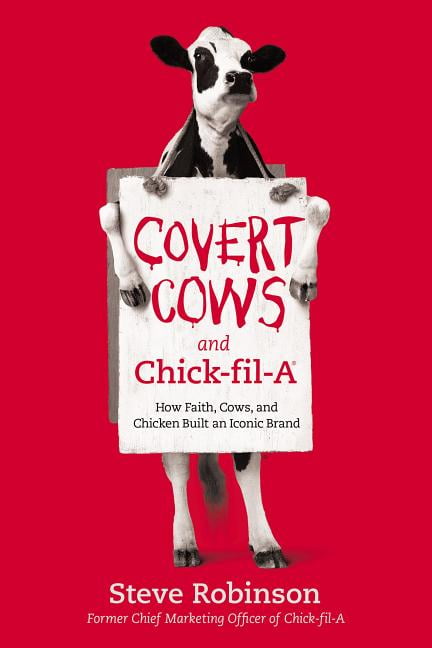Covert
Covert Cows and Chick-Fil-A: How Faith, Cows, and Chicken Built an Iconic Brand (Hardcover)
USD$15.95
5 stars out of 2 reviews
2 reviews
USD$15.95
$15.95
Free overnigh delivery

Notice unusual marketplace activity?
ReportCustomer reviews & ratings
5 out of 5stars
(2 reviews)
Most helpful positive review
5.00 out of 5 stars review
Verified Purchaser
02/08/2020
Unknown
Most helpful negative review
5.00 out of 5 stars review
Verified Purchaser
02/08/2020
Unknown
-
5.00 out of 5 stars reviewVerified Purchaser08/21/2020Joy
-
5.00 out of 5 stars reviewVerified Purchaser02/08/2020“Covert Cows and Chick-fil-A” is not an exposé. Instead it is written as an inside look from a long-time employee's view. An employee who was there before the “cows” came home, so to speak. There are a LOT of faith references in the book. The reason for that is the founder, S. Truett Cathy, was a man of faith. He used his faith and those tenements to build his business and train his people, thus becoming a brand and a successful one at that. That faith is reflected in the mission statement of the company: “To glorify God by being a faithful steward of all that is entrusted to us. To have a positive influence on all who come in contact with Chick-Fil-A” As a result, the success of the restaurant is built on the relationships with the people – customers and staff. He believed the customers were the business not the product they were selling. Their corporate outlook is customers then operators. The rest comes successfully. Even testing new menu items involves the customers. S. Truett Cathy made the decision to close on Sundays in 1946 when he opened his first restaurant in Hapeville, Georgia (The Dwarf Grill). He saw the importance of closing on Sundays so that he and his employees could set aside one day to rest and worship if they choose – a practice they still uphold today. “We should be about more than just selling chicken. We should be a part of our customers' lives and the communities in which we serve.” S. TRUETT CATHY (1921—2014) He believed in a relationship with the customers as a guide – meaning the owner/operator (manager) had a hands on approach to running the store. As of 2018, they had jumped in sales to #5 in sales behind No. 1 McDonald's, Starbucks, Subway and Taco Bell. Those chains are open seven (7) days a week – Chick-fil-A isn't. Looking at the per store averages, how many locations they operate, and the smaller menu – Chick-fil-A earns more (on an average) per store. In 2017, CFA per unit, made about $4,090,900. The total sales for a McDonald's ($2,670,320 per unit), Starbucks ($945,270/unit) and Subway ($416,860/unit) is $4,032,450 combined. Okay, so why did CFA need the cows? Marketing. No one knew Chick-fil-A other than word of mouth. And, CFA didn't have the multi-million marketing budget their competitors had. But, why cows? It came after someone said, jokingly, “don't have a cow”. From there the idea was born. In short, the cows don't work for Chick-fil-A. They're never CFA shills. They're solely in it for self preservation. That's always the number one thing to remember. They stay witty and relevant to avoid becoming burgers. It started in 1995 when some renegade cows, who couldn't spell, wrote: “Eat Mor Chikin” on a billboard in Texas. And, it proved successful. When asked, the customers had an 80% recall of the advertising. This book describes the early days – the early locations, marketing, business ventures and strategies. This book is a testament to faith, people over profits, and that that remaining a success is harder than becoming one. Highly recommended for people who are fans of the restaurant as well as those who are curious as to how it became successful.Unknown